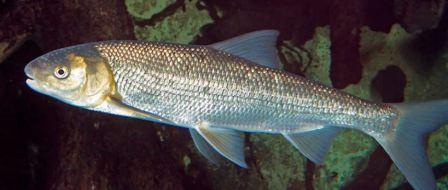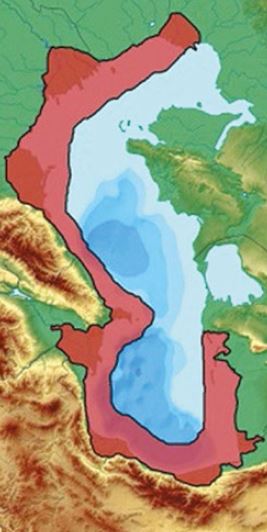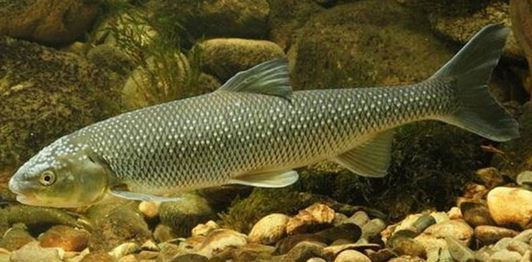Growing kutum fish in fish farming

Kutum Rutilus kutum (Kamensky, 1901) is one of the most important commercial fish species in the southern Caspian Sea, Russia, Azerbaijan, Iran and Turkmenistan. The demand for kutum fish is almost unlimited among the local population due to the good taste of the meat and high culinary properties. However, its reserves are greatly undermined and therefore, satisfying the demand for this fish is only possible through artificial reproduction of kutum in aquaculture. Kutum is suitable for cultivation in pasture and pond aquaculture; when growing kutum in polyculture, it can be bred in a recirculation system. This article will talk about breeding kutum, there will also be a lot of other useful information, it will be interesting to read to the end!
Content
- Kutum fish description
- Where is kutum fish found?
- What does kutum fish look like?
- When does kutum spawning begin?
- Nutrition of kutum
- What can you cook from kutum fish?
- Growth rate of Caspian fish kutum
- Kutum breeding
- Nutrition of kutum during breeding
- Kutum fish and the Red Book
Kutum fish description
What is kutum? Kutum Latin name Rutilus kutum (Kamensky, 1901) is one of the subspecies of carp. Kutum fish is no less interesting aquaculture object than shemaya, carp, fisherman, bream, pilengas and others.
Where is kutum fish found?

Where does the kutum fish live? Kutum fish is endemic to the Caspian Sea. Kutum is an anadromous fish of the southwestern region of the Caspian Sea, Kura, Samur, Terek. Considering that the fish of the Caspian Sea, kutum, has high taste, there have been attempts to acclimatize kutum in the northern part of the Caspian Sea in the Volga and Ural rivers, in the Azov and Black Seas. First, the Caspian Sea fish kutum was introduced into the basins of the Kuban and Don rivers, and then into the Dnieper River basin, and later into the northwestern Black Sea estuaries. However, as a result of large-scale acclimatization work, the number of kutum in new areas remained low or was measured by single individuals, which, however, does not mean that kutum cannot be grown in pasture aquaculture in regions new to it. Experiments have shown that kutum takes root well in new conditions.
What does kutum fish look like?

Kutum is a fish that prefers to stay in schools in the sea and only enters the river to spawn.
The description of the kutum fish is as follows - the general appearance of the kutum is light, bright silver, the dorsal part is green or gray with a marsh tint. The body of the kutum is low, its maximum height is slightly greater than the length of the head or equal to it. The chest and abdominal parts are white. The dorsal and caudal fins are gray. The pectoral, abdominal and anal fins are light, sometimes with a red tint. The Caspian fish kutum from different habitats has a different appearance.
What the kutum fish of the Kizlyar Bay looks like - in the dorsal part it is gray, with a black tint, and what the kutum of the mouths of the Terek or Sulak rivers looks like, it is a fish with a brown tint. Before the start of spawning, the red moon-shaped stripe near the kutum acquires a pronounced color before the eyes. On the head of male kutum there are spines and pits in small pellets.
The Caspian kutum fish reaches a length of 67 cm, but sometimes specimens of 71 cm and a weight of 4 kg (rarely 5 kg) are caught. As a rule, the average size of the kutum in catches is 40–49 cm long and weighs 1.0–1.7 kg. Kutum matures at the age of three, but mainly at the age of 4. The lifespan of kutum is 11 - 12 years.
When does kutum spawning begin?

Spawning migrations of kutum from the sea to rivers begin in the third ten days of February, when the water temperature is 9-10 °C. An increase in the spawning run of kutum is observed from the second ten days of March to the beginning of April, when the water temperature is 12.3–12.6 °C. Kutum spawns once. Spawning occurs at the end of March - the second ten days of April in thickets of reeds, reeds and water lilies in river floods and reservoirs, on pebble soil, on tree roots at a water temperature of 13-15 ° C.
In the Caspian Sea, kutum spawning takes place at water clarity of 0.2-0.45 m, salinity of 0.28-0.22%0, and water oxygen saturation of 7.86. Spawning and egg development are most active at water flow speeds of 0.04-0.5 m/s.
During the period of acclimatization of kutum in the Sea of Azov, its spawning was observed in the arms of the Kuban estuaries on washed roots, at water temperatures from 5 to 15 C, oxygen saturation 26.2%, salinity 0.3-3.8%0, current speed in spawning areas - from 0.07-0.5 m/s. The clutches of kutum eggs appear in large clusters.
The fertility of kutum ranges from 30 to 300 thousand eggs, the diameter of mature kutum eggs is 1.2-2.3 mm.
Kutum embryos develop in 12-15 days at a water temperature of 8-12 C, and at a temperature of 20 C, kutum embryos develop in 5-6 days. Kutum is characterized by prolonged development in the shell and hatching at later stages of development. Kutum fry gradually slide into the sea from the second ten days of May.
Nutrition of kutum
The kutum fish is a Caspian benthophage - it feeds on benthic organisms; the kutum's diet mainly consists of mollusks and other aquatic invertebrates (insect larvae and crustaceans). We will discuss in more detail below what kutum feeds on when being bred in a fish farm.
What can you cook from kutum fish?
Kutum fish are famous for their delicious meat ohm Kutum is widely known in the Muslim world, where balyks and various dishes for the festive table are prepared from it. So there is a very high demand for it.
Growth rate of Caspian fish kutum
Table - Linear growth of kutum
Water Age, years
1+ 2+ 3+ 4+ 5+ 6+ 7+
Kizilagach Bay 14.3 24.4 33.2 41.3 46.5 53.5 58.4
Kutum breeding
To breed kutum, kutum producers are harvested during the period of migration in rivers, when the reproductive products of kutum are at stages IV-V of maturity, at a temperature of 6-22°C. The peak of kutum spawning occurs at 10-16°C. The size of male kutum is 38-55 cm, females within 40-60 cm, the average weight of males is 0.7-1.5 kg, females is 1-2 kg at the age of 3-7 years. Caught kutum producers in a 1:1 ratio are kept in cages or slots, then transported to a fish hatchery, where males are kept separately from females.
To obtain mature reproductive products, kutum spawners are kept in cages (10 pcs/m2) set for 3-15 hours, after which eggs and milt are collected without injection. The eggs are fertilized using the “dry” method. Caviar is sticky, wash it for 1-2 hours.
Kutum spawns once, the eggs are collected completely. Kutum eggs are incubated in Yushchenko apparatuses. 0.6 kg of caviar (150-200 thousand pieces) is placed in one apparatus. Typically, this amount of eggs is obtained from 2 females and fertilized with the sperm of 3 males. Incubation takes place at 20°C, lasts 5-6 days, at a temperature of 8-16°C, incubation lasts 12-15 days.
It is possible to successfully incubate kutum eggs in the field using Ses-Grin and Chalikov apparatuses. To do this, the box-devices are fixed in running water.
Loading rates for kutum caviar: into the Ses-Grin apparatus - 200 g (50 thousand pieces), Chalikov - 300 g (75 thousand pieces).
Kutum caviar is transported in 250-300 thousand pieces. in 40-liter plastic bags with 15 liters of water; waste is 5%.
After hatching, the kutum larvae continue to be kept in Yushchenko’s apparatus for 2-3 days, adapting to a mixed diet.
Kutum fingerlings are reared and raised in ponds with an area of 3-5 hectares, 1.5-1.8 m deep, with shallow water (0.5 m) up to 30%. Planting density is from 150 to 250 thousand pieces. depending on plankton biomass.
Nutrition of kutum during breeding
What to feed kutum? Larvae with a size of 9-10 mm feed on microzooplankton and fouling, later on phytoplankton and nauplii, and with a size of 13 mm they switch to feeding on zooplankton and insect larvae. With a size of 17-20 mm, at the age of 1 month. they switch to feeding on benthos and plankton. At this density, they are kept for 2-2.5 months, when kutum fry reach an average weight of 1-1.5 g. Kutum fry are caught through a fish catcher, where they themselves roll down when the water is drained.
Experience in growing kutum in reservoirs with an average area of 180 hectares shows that fingerlings grow up to 5 g, two-year-olds - 60-80 g, three-year-olds - up to 300-500 g. Planting density - up to 1 thousand pieces / ha in a polyculture with other fish.
In such a reservoir, when the spawners are released, spawning can take place if there is a flow, and at the bottom, in the area of the discharge channel, there are non-silting pebbles.
Table - Standards for breeding and commercial cultivation of kutum
Weight of manufacturers, kg
males 0.7-1.5
females 1-2
Working fertility, thousand pieces 60-100
Ratio of females and males 1:1.5
Standard for planting producers in cages, pcs/m2 10
Manufacturers reserve, % 50
Maturation of producers, % 95
t water during spawning, °C 6-22
Egg fertilization rate, % 98
Loading into Yushchenko's apparatus, thousand pieces. 150-200
Duration of embryo development (days) at t, °C
8-16 10-15
20 5-6
Yield of free embryos, % 75
Duration of keeping free embryos before planting in the pond, days 5-6
Yield of larvae after incubation, % 95
Density of planting of larvae in ponds, thousand pieces/ha 100-250
Duration of juvenile rearing, days 60-75
Survival rate of juveniles in ponds, % 80
Average weight of juveniles, g 1-1.5
Fish productivity of ponds, kg/ha 120-160
Area of fry ponds, ha 3-5
Area of feeding ponds, ha up to 200
Average weight, g
young of the year 5
two-year-olds 60-80
three year olds 300-500
Kutum fish and the Red Book
It is important to remember that kutum fish is listed in the Red Book of Kazakhstan; kutum was in the Red Book of Russia from 1997 to 2004. Many countries, including Iran, are actively working on the artificial reproduction of kutum.